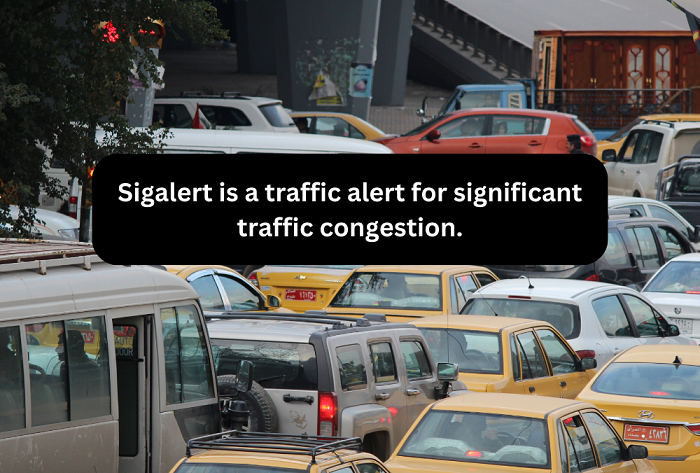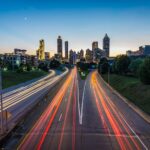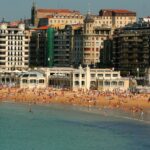At some point in your SoCal driving life, you have likely felt this. From when you wake up or return home after a hard day’s work, all your thoughts focus on getting where you need to go – whether that means being slightly late for an appointment or starting early.
Soon enough, however, the terrifying scenario will play out: you will receive a Sigalert San Diego Sigalert inland empire regarding the direction you’re travelling! Too late now; now could be too late as being stuck for long in one of the country’s most hazardous traffic conditions is inevitable.
Discover how you can best avoid this situation by understanding what SigAlert means, Sigalert inland empire and then how you can adapt your plans around it.
What Is a “SigAlert?
A “SigAlert” is a traffic alert issued by authorities when there is an event which causes two lanes or more to remain closed for more than two hours, resulting in significant traffic congestion. Authorities typically issue this type of notification during major traffic jams that impact at least two lanes being blocked for over an hour at one time.
SoCal freeways with multiple lanes can still be highly debilitating during Sigalert inland empire events, often leading to severe traffic congestion. Shut-down roads force cars to merge with others, slowing traffic flow, while rubbernecking causes many drivers to slow down to look at an accident; an incident of any length causes more congestion than anticipated.
History of the SigAlert
The SigAlert began its journey during World War II as California traffic worsened as more residents purchased automobiles and employment opportunities within a rapidly expanding defence industry that provided much-needed cash flows that allowed for personal spending in other areas.
Police would inform Los Angeles radio reporter Loyd Sigmon of any accidents which caused concern, who then told his listeners of them through his program known as Sig-Alerts. Subsequently, electronic devices were also developed by police for transmitting such alerts directly to him, as well as other journalists in Los Angeles.
California Highway Patrol (CHP) issues alerts via multiple communication platforms to inform the public and media of pending traffic incidents in their region.
Read: Carport Height Matters: Finding The Right Clearance For Your Vehicle
How is Sigalert used in early times?
On January 22nd 1956, one of the first significant “Sigmon traffic alerts” was issued and caused congestion. This alert detailed an accident which resulted in derailment near Los Angeles Union Station and requested medical professionals and nurses be at the scene immediately. However, there were too many nurses, doctors, and tourists present, which only compounded the issue further. Some accounts about Sigalert inland empire mention it taking place during Labor Day weekend 1955, while other articles may confuse both incidents.
LAPD could only issue one warning per day; however, other agencies soon made calls for broadcasted messages relating to issues like reports of rabid dogs, gas leaks or collisions within Los Angeles Harbor. A pharmacist made use of this system after making a potentially deadly error while filling prescriptions (which customers received promptly via SigAlert) while simultaneously using it to inform people of Baldwin Hills Dam collapsing in 1963.
Seattle, Washington, became well known for using “Sigalert” during the late 1970s and early 1980s.
How to use the Sigalert Orange County Map
Lines of Sigalert orange county traffic flow on this map follow these rules: red lines indicate heavy Sigalert orange county traffic flow, yellow/orange lines indicate medium flow, and Green indicates either no Sigalert orange county traffic*. Black or no traffic flow lines could mean road closure, or there isn’t a traffic monitoring system installed, though you could also zoom further to view local data if traffic flows are invisible on your screen; press here if zooming isn’t working for you! If that fails, if you cannot zoom on the map, press here instead to zoom off the map to try again, focusing on it, then map zoom in using another method, such as pressing here instead of allowing it.
How to use the Sigalert San Diego Traffic Map
Lines of Sigalert San Diego traffic flow can be divided into three groups. Red indicates heavy flow, Yellow/Orange indicate medium Sigalert San Diego flow traffic, and Green means normal or no Sigalert San Diego traffic*. Black lines without flow lines could show road closure, but typically, they indicate that insufficient traffic is recorded for recording purposes or that no monitoring system exists to track it. Zoom further if no traffic movement or lines appear, or press here (to focus off of it all temporarily), then try moving around again if unable.
Avoid Accidents
Being involved in an accident is the last thing anyone wants. A traffic school that is recognized by state authorities may help reduce your chances of collision and may even help get traffic violations revoked altogether.
In conclusion
In the labyrinth of Southern California traffic, the SigAlert is your ally against unexpected delays. By understanding its history and staying informed through modern communication channels, you can navigate the freeways with ease. Remember, a little foresight can turn a potential traffic nightmare into a stress-free journey. Stay informed, stay safe, and enjoy the ride!
FAQ
Why is it called Sigalert?
The term was originally the name of a pioneering system of automated radio broadcasts regarding traffic conditions, introduced in the 1950s and named after its inventor, Loyd Sigmon.
What is a Sigalert in California?
The official definition of a Sigalert is “any unplanned event that causes the closing of one lane of traffic for 30 minutes or more.” Q. What is the origin of the term Sigalert? A. Sigalerts are named after an early radio engineer in Los Angeles, Loyd Sigmon.
Why is there always traffic in Corona?
The 91 Freeway between Fullerton and Corona is one of the most congested stretches of highway in California — an often frustrating bog of idling engines, squeaking brakes and commuter angst. The rush hour traffic results from many jobs in Orange County and more affordable housing in the Inland Empire.
What are peak traffic hours in California?
Rush Hour. Los Angeles is like most other cities in the country regarding rush hour. Drivers travelling to and from work clog the roads between 7 a.m. and 10 a.m. during morning rush hour and between 4 p.m. and 7 p.m. During these hours, the freeways are always jammed.
Why is there traffic in Los Angeles?
LA has a lot of traffic because it has a large population spread over a large land area, lousy public transportation, lots of cars, and just a couple of main highways to move people north and south.




